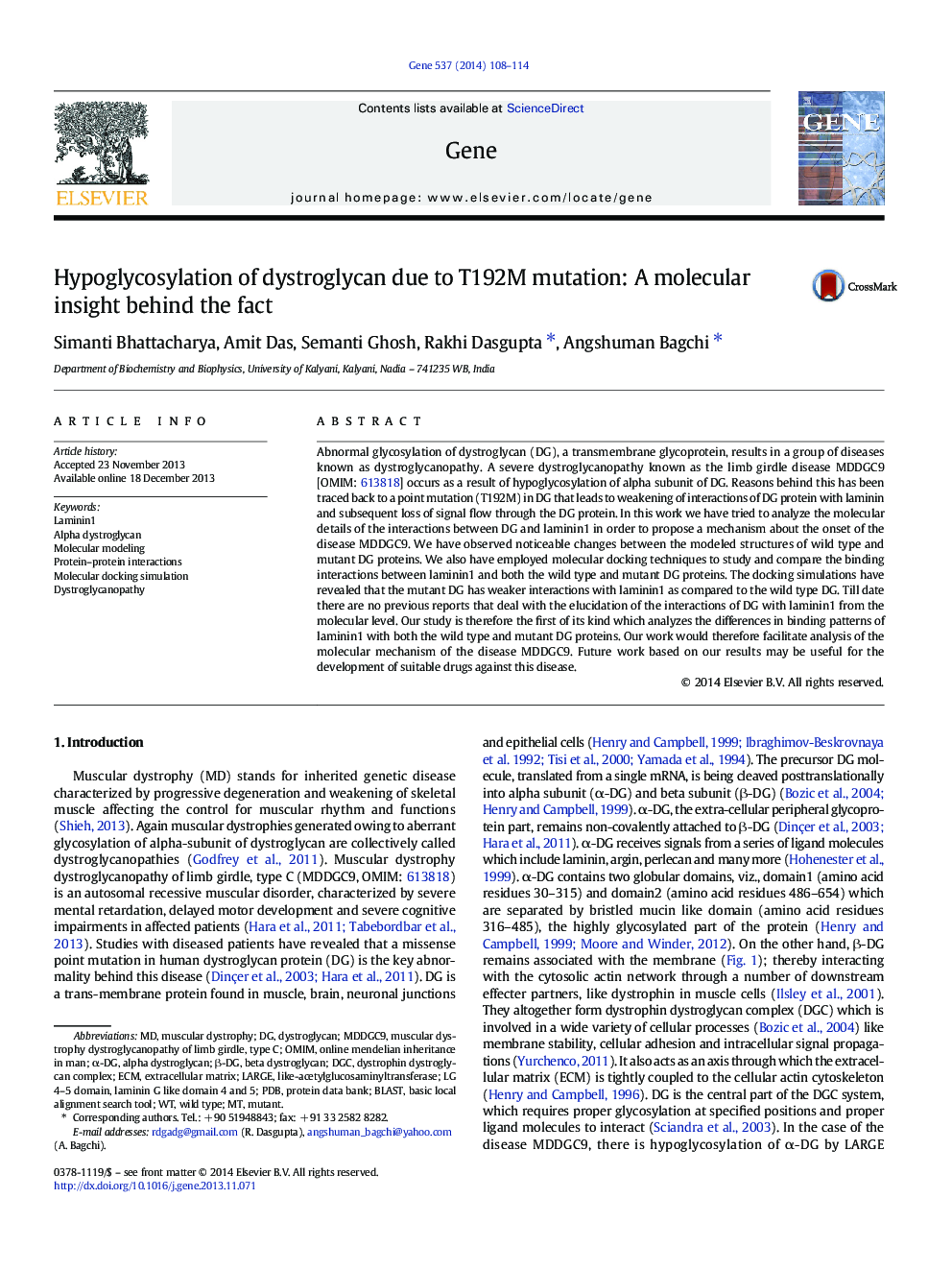| کد مقاله | کد نشریه | سال انتشار | مقاله انگلیسی | نسخه تمام متن |
|---|---|---|---|---|
| 5906078 | 1159947 | 2014 | 7 صفحه PDF | دانلود رایگان |

- Molecular modeling of both wild type and mutant (T192M) human dystroglycan
- Significant structural differences (RMSD 2.593 Ã
) between two models
- Altered hydrophobicity around the mutation site
- Change in interactions between laminin1 and dystroglycan
- Molecular mechanism of disease, MDDGC9 [OMIM:613818] onset.
Abnormal glycosylation of dystroglycan (DG), a transmembrane glycoprotein, results in a group of diseases known as dystroglycanopathy. A severe dystroglycanopathy known as the limb girdle disease MDDGC9 [OMIM: 613818] occurs as a result of hypoglycosylation of alpha subunit of DG. Reasons behind this has been traced back to a point mutation (T192M) in DG that leads to weakening of interactions of DG protein with laminin and subsequent loss of signal flow through the DG protein. In this work we have tried to analyze the molecular details of the interactions between DG and laminin1 in order to propose a mechanism about the onset of the disease MDDGC9. We have observed noticeable changes between the modeled structures of wild type and mutant DG proteins. We also have employed molecular docking techniques to study and compare the binding interactions between laminin1 and both the wild type and mutant DG proteins. The docking simulations have revealed that the mutant DG has weaker interactions with laminin1 as compared to the wild type DG. Till date there are no previous reports that deal with the elucidation of the interactions of DG with laminin1 from the molecular level. Our study is therefore the first of its kind which analyzes the differences in binding patterns of laminin1 with both the wild type and mutant DG proteins. Our work would therefore facilitate analysis of the molecular mechanism of the disease MDDGC9. Future work based on our results may be useful for the development of suitable drugs against this disease.
Journal: Gene - Volume 537, Issue 1, 1 March 2014, Pages 108-114